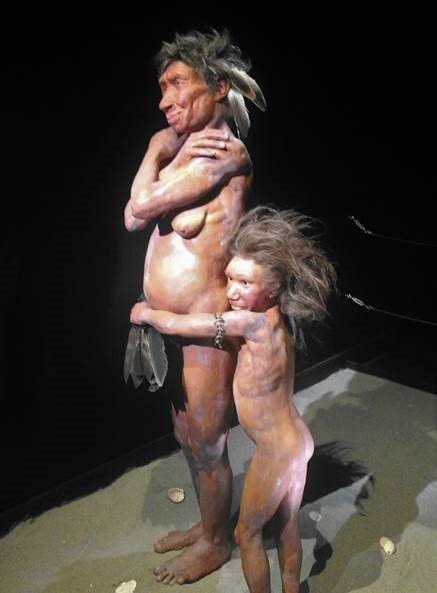A study led by the Spanish National Research Council (CSIC) have found that Neanderthals captured choughs –birds with black plumage and a similar size to a dove- during the night for their own consumption. Until now, the association between Neanderthals and these species was said circumstantial, and it was due to the use of the same shelter of both species. Marks on chough fossil bones reveal their consumption by humans. The study, published in the Journal Frontiers in Ecology and Evolution, was conducted by researchers of the National Museum of Natural Science of Spain (MNCN-CSIC), the Doñana Biological Station (EBD-CSIC) and the Catalan Institute of Palaeontology Miquel Crusafont
Neanderthals, who lived across temperate zones of Europe and Central Asia until their extinction 40.000 years ago, are known by eating large herbivores, such as horses, goats and wild Bovidae species. However, more evidences of their varied diet have been found in recent years. It included plants, small mammals, some birds and even invertebrates, such as crustacean and bivalves that they collected on coastal areas. Among fossils of birds found most frequently in caves occupied by Neanderthals are those of the red-billed chough and the Alpine chough. These species form mixed flocks to sleep in cavities inside the chasms and are present in human constructions since the Neolithic period.
"Recently, we could demonstrate that some fossil bones of chough from Neanderthal Sites present evidence of processing and consumption by humans. In addition, we know that some of these bones were cooked on a fire", says Guillermo Blanco, researcher at the MNCN-CSIC and first author.
This study review data from Neanderthal sites with fossil bones of red-billed chough and the Alpine chough, species that would have provided a good protein source. "Choughs and Neanderthals overlapped in their geographical distributions in Eurasia during a long period. In fact, they appeared in sites of different periods from the Iberian Peninsula to Caucasia. Therefore, the habit of consuming these birds was large over time and space and it must have been frequent", explains Juan José Negro, scientist at the EBD-CSIC.
To determine how Neanderthals could capture these Corvid species, very elusive and mistrustful birds during the day, researchers use what is known as an actualistic approach, which suggest past behaviours by analogy with events that take place in the present.
"The capture of choughs with bare hands in cavities that the birds used to sleep in the night, with no other technology than torches, leads us to think that Neanderthals could capture them when they came into the caves at sunset to spend the night. With the help of fire, that they dominated, they could generate enough light to chase them away into the cave and capture them", explains Antonio Sánchez-Marco, from the Catalan Institute of Palaeontology Miquel Crusafont and co-author of the study.
The social behaviour of choughs to sleep at night allows the capture by hand and several individuals simultaneously. In addition, when they are frightened and chased in the caves, they tend to fly inside. As the study points out, this could ease the captures. The scotopic vision (with low-light levels) of the Neanderthals could help in this hunting, thus they had bigger eyes than Homo sapiens.
Reference:
Guillermo Blanco, Antonio Sánchez-Marco y Juan José Negro. Night Capture of Roosting Cave Birds by Neanderthals: An Actualistic Approach. Frontiers in Ecology and Evolution. DOI: 10.3389/fevo.2021.733062
https://doi.org/10.3389/fevo.2021.733062








 ¡Abierta convocatoria para proyectos de investigación en la ICTS- Doñana!
¡Abierta convocatoria para proyectos de investigación en la ICTS- Doñana!


